This film festival wants to spook S’poreans with Asian horror, on screen and in the flesh

The festival will run from October 25, 2024, to November 3, 2024—here’s what we know so far.
Six horror films, one haunted house
Six horror movie titles will be screened during the festival at The Projector X cinema at Cineleisure, ranging from cult classics to found footage thrillers across the region:
You can also expect to experience the horror firsthand at The Realm—the festival’s haunted house that brings the on-screen terror to life on the first floor of Orchard Cineleisure.
The experience has five immersive “worlds” replicating movie scenes from Asian horror films, where you will have to find clues to solve simple tasks to move through the haunted house.
Ticket Prices
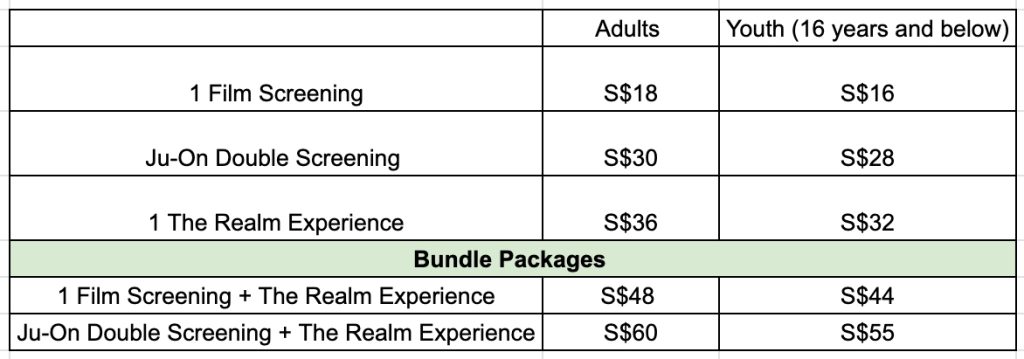
Tickets are now on sale via The Projector’s website and Eventbrite.
We might not be the biggest horror junkies, but we can never say no to having a good scare, especially in the Halloween season. On top of that, we doubt that any event in Singapore has both movie screenings and a haunted house in one, so why not give it a shot?
- Learn more about the House of Horror Film Festival here.
Also Read: How this S’porean DJ trio is revitalising the local club scene with wacky themed parties
Feature Image Credit: House of Horror Film Festival
The Makeover Guys on their new 10,000 sq ft space that’s 2x the budget, with a last-min cafe
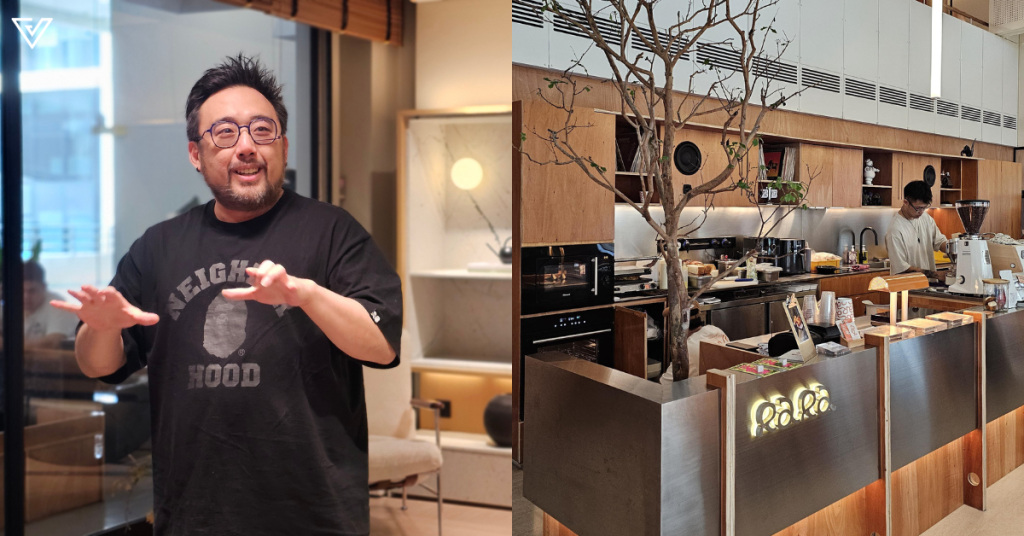
What does a nearly RM4 million office look like?
We got our answer recently while touring the office of The Makeover Guys (TMOG). Located in Kota Damansara, the space spans around 10,000 square feet, according to founder and CEO Gavin.
But why did it cost so much?
First, meet the makeover guys
For those who haven’t heard of these guys before, TMOG might sound like just an interior designer or decorator to you, just based on their name. More than that though, they’re a one-stop property solution for Malaysia’s homeowners.
The company was founded in 2015 by Gavin and Vince to bridge the gap between ultra-expensive homes as well as those Ikea copycats.
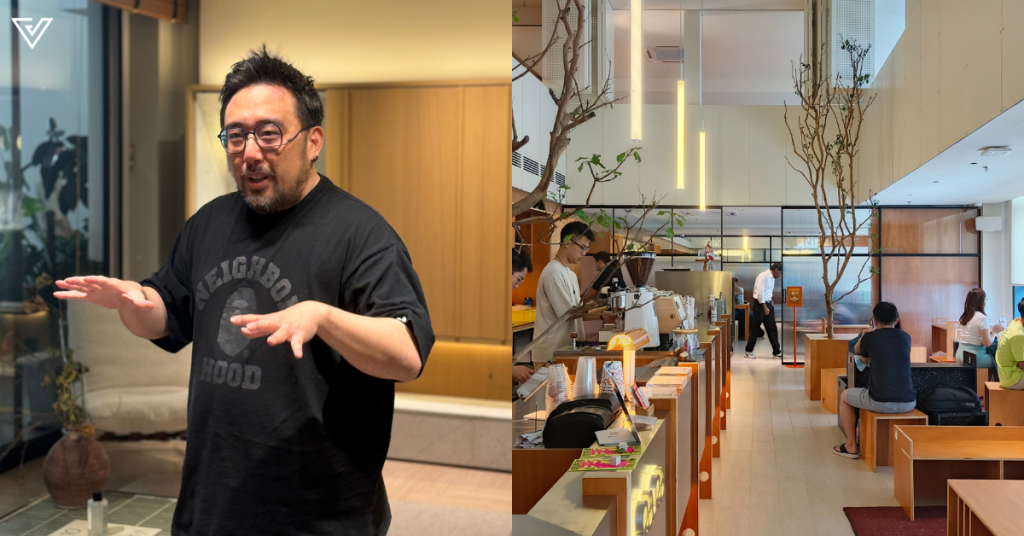
Essentially, they wanted to make options that were “affordable but atas” available to Malaysians.
Starting from that initial cause, TMOG has grown massively over the years. Beyond their end-to-end interior design help for own-stay projects as well as rental investments, TMOG also works with developers to launch properties together, bundling it with their services.
They’ve worked with premier developers such as Sime Darby and Tropicana, giving input about their property from the very beginning.
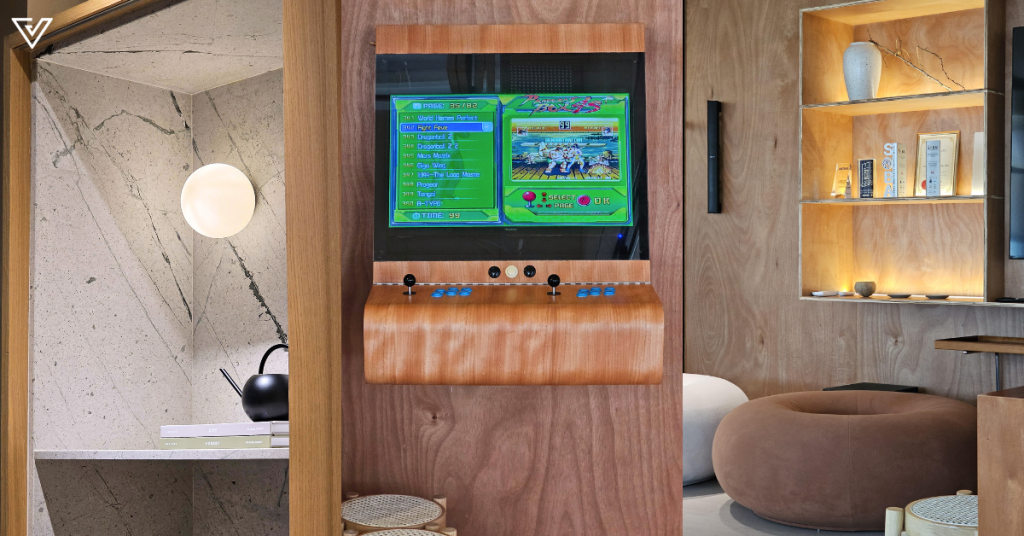
“I think the goal is to minimise the construction waste,” Gavin pointed out. “There’s no point for a developer to build something, and then we come in and tear it down. That’s totally a waste of money and a waste of time, and it generates a lot of waste.”
But enough about designing for others; what about their very own, newly “made-over” space?
Experiencing the experience centre
TMOG’s new digs in Kota Damansara are like a three-in-one space. Not only is it their office, it’s also an experience centre as well as… a cafe?
While TMOG has showrooms, this experience centre is the first of its kind for the company. The idea behind it is for customers to really get comfortable and feel at home—none of that sterile, formal vibe that some showrooms have with the “do not sit” signs.
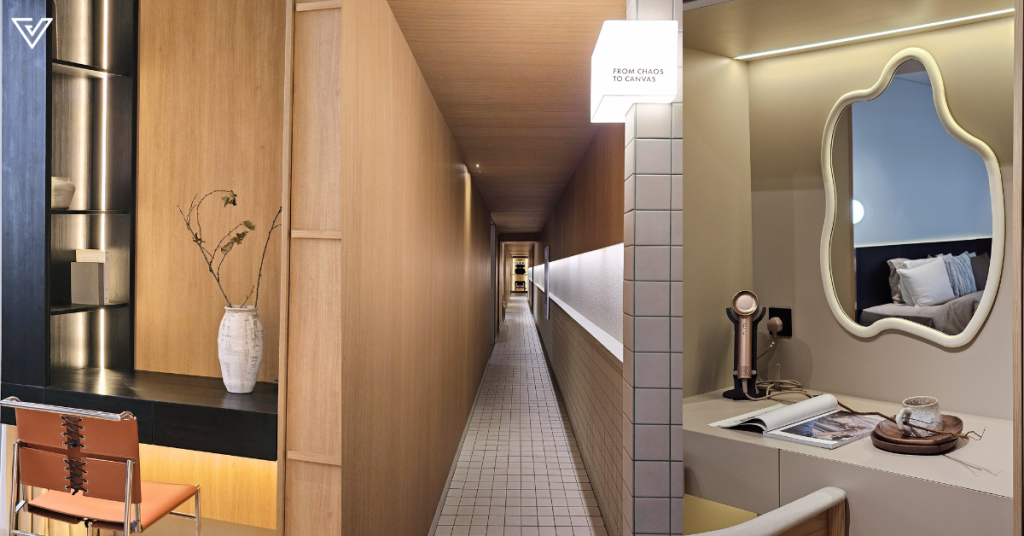
The centre has four areas—a living room, a kitchen, a bedroom, and then an additional space where there’s no built-in furniture to show clients what can be accomplished even with loose pieces.
After giving a tour of the new space, Gavin sat down with us to share more about TMOG.
“This has always been on the roadmap; this has always been the plan,” he shared about the experience centre.
However, due to the pandemic, the plan was put on hold for quite some time. Having made it through the challenging few years, it was finally time for them to make good on that goal. Planning took about six months, while the actual renovation process took eight to nine months.
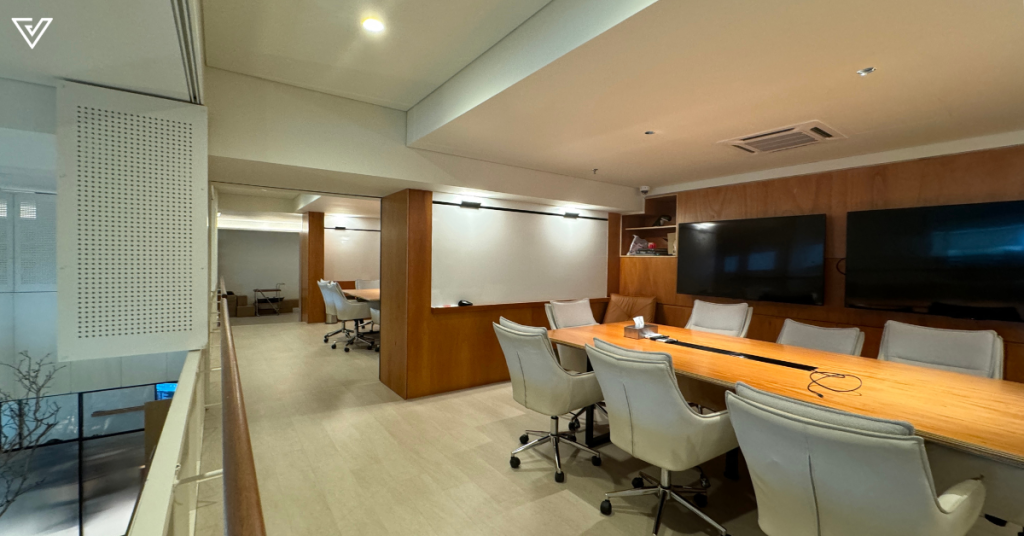
As for the Kota Damansara location, Gavin’s answer was simple: “I’m a PJ boy, that’s it. I can’t imagine leaving it.”
Beyond that, the concept of the EmHub building, where TMOG is located, perfectly suited what they were looking for. Like TMOG’s own space, EmHub offers three-in-one spaces that can serve as a warehouse, showroom, or office.
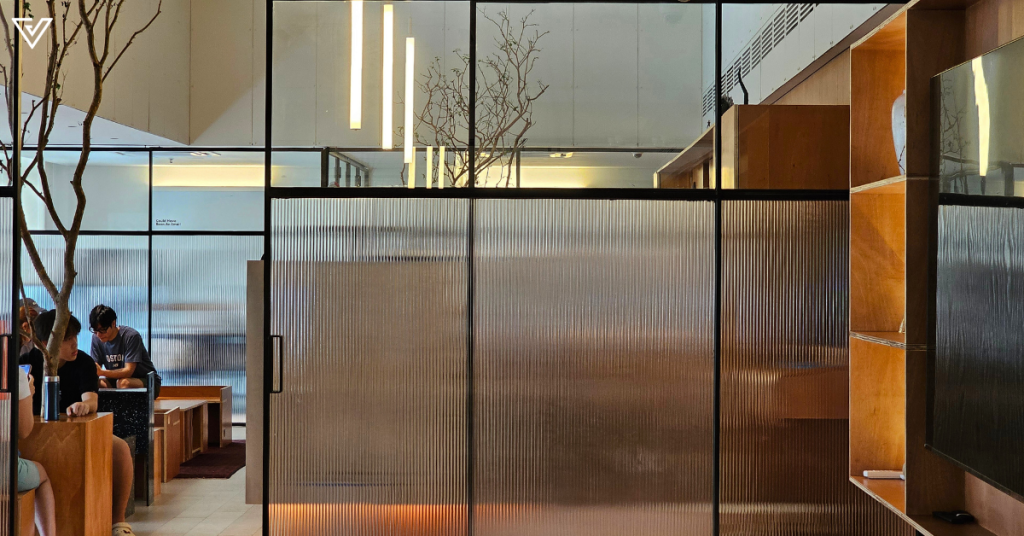
The way it’s set up allows for the TMOG team and lorries to park directly outside the office. This allows the team to make quick refreshes to their experience centre, as they plan to introduce new themes every now and again.
Going all-in
While TMOG does take on commercial projects, it’s not at the core of what the team does. Commercial designs tend to be more of a pet project for the designers to experiment with new concepts, as residential spaces do tend to follow a certain format.
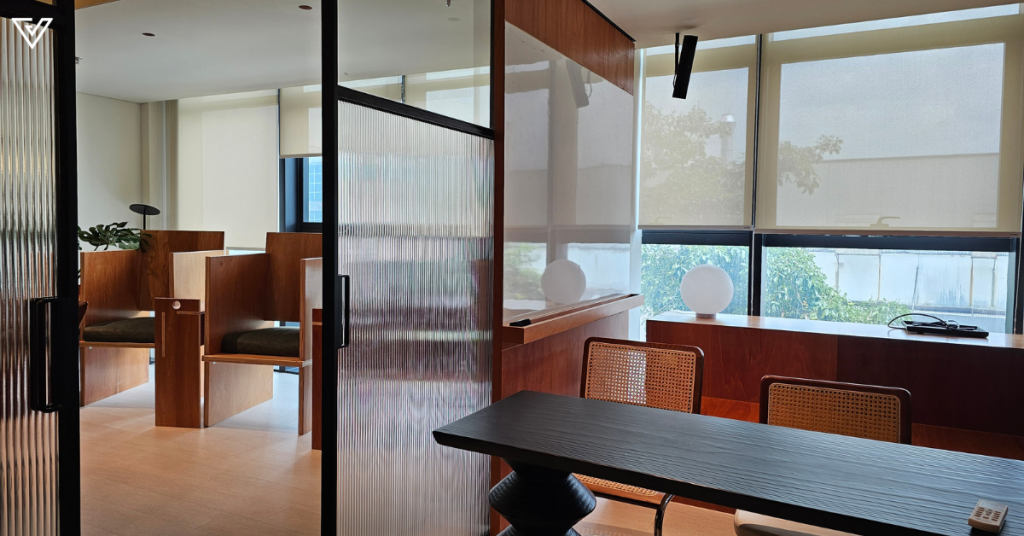
“This entire buildup of the office and experience centre, I think, was one of the most fun projects the team has got to work on,” he said.
But all this fun experimentation does come at a cost. To build the entire experience centre and office, Gavin said it cost almost RM4 million, which was double their initial budget.

As someone who is in the industry, Gavin thought that he had the budget on lock, but many last-minute decisions were made along the way. At one point, the mantra became “might as well,” which added quite a few hefty bills to the final cost.
Another thing that likely added to the cost was the incorporation of RaRa Coffee’s space.
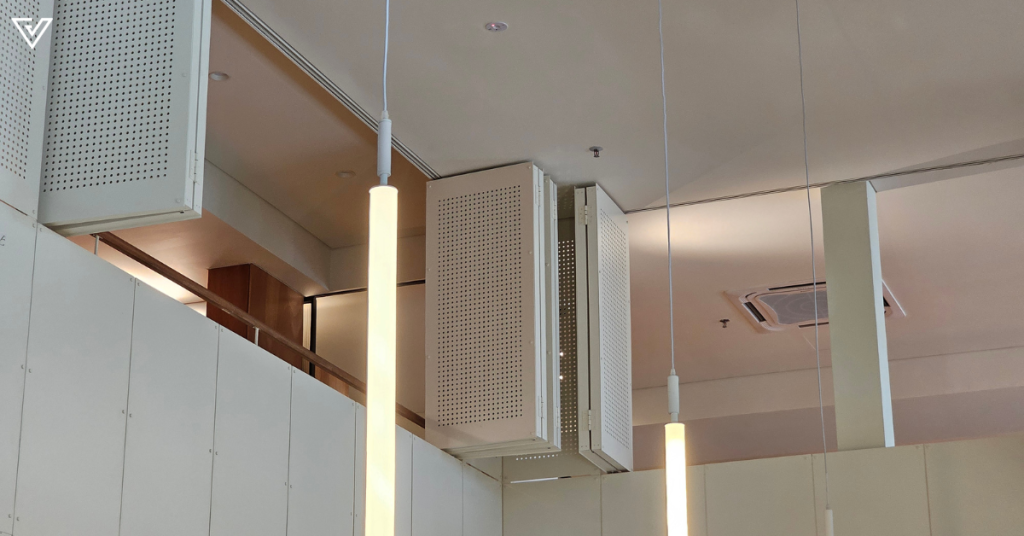
Not just an office space or a showroom
One thing that the centre has already gone viral for is its built-in coffee shop, RaRa Coffee.
“I told you the construction took around eight to nine months, right? It was only until month seven that [we decided on RaRa Coffee’s involvement],” he said.
Yet, the root of this collaboration predates even the planning of the experience centre.
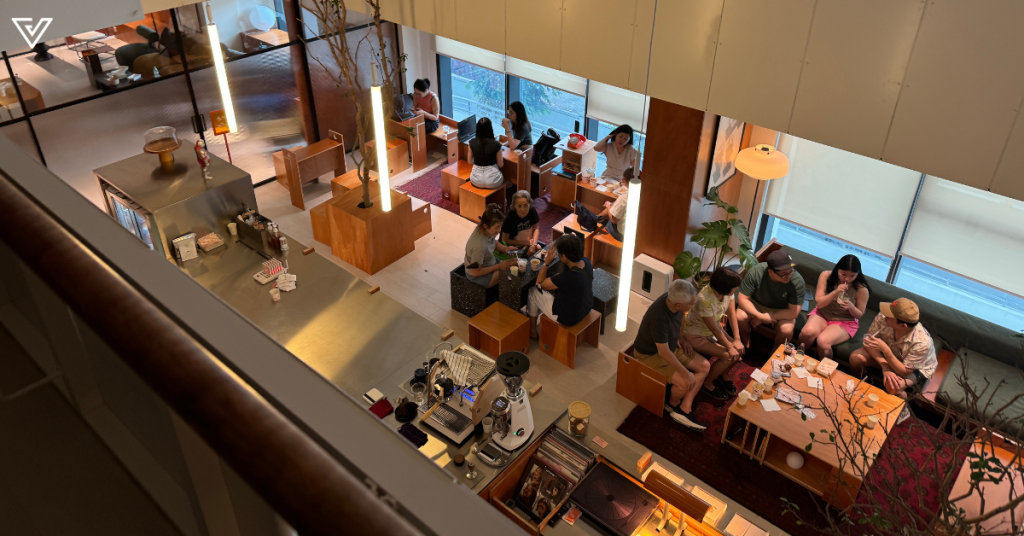
Gavin explained that he’s known the RaRa Coffee team for a long time, ever since they had their very first 500-square-foot studio in Ara Damansara. In fact, the founder is actually a part of TMOG.
“We always joked, ‘Wouldn’t it be nice to have RaRa in our office?’” Gavin recalled. Of course, there was always some sincerity to that joke.
But as the years came and went, so did that idea. Assumptions were made that neither party wished to make that old dream a reality anymore.
Yet, halfway into building the new experience centre, Gavin suggested to RaRa that they should open up in the area. When they responded that parking and costs seemed to be too high, Gavin offered them a spot in the office. And, well, they took the opportunity.
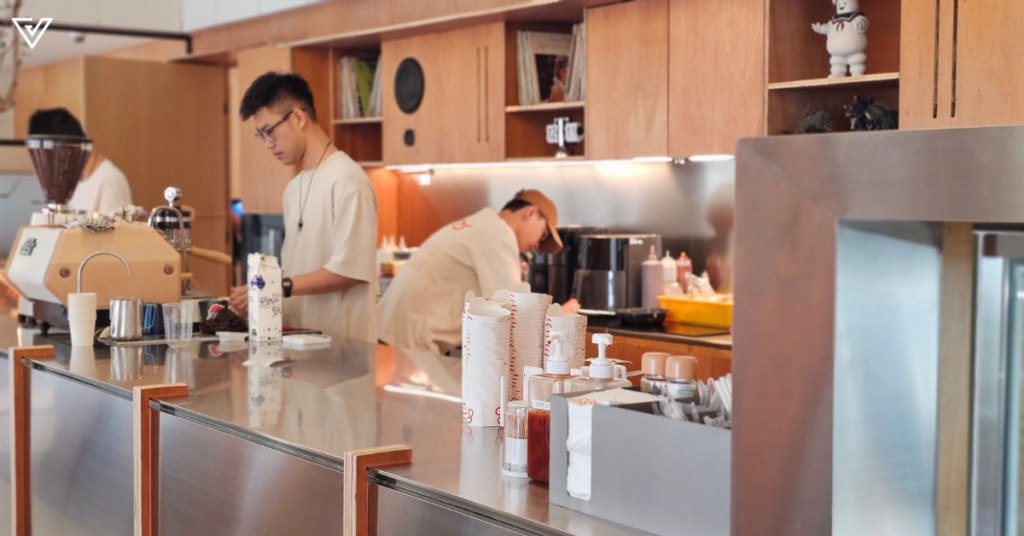
“Quickly in those few days, I had to change the entire floor plan,” he said. “I actually built some stuff already, but I had to tear it down to change it to one long cafe space.”
The space was supposed to be a play area, complete with an 85-inch TV and gaming consoles. That TV is now stored away.
But well, as Gavin said, “No regrets.”
Not here to design award-winning concepts
Speaking about TMOG’s intentions, Gavin shared that the goal is never to create crazy, award-winning designs.
“I think we need to push boundaries for sure, but it cannot be just on the design aspect, because we’re here to serve a purpose, which is to enable people to enjoy better homes,” he pointed out.
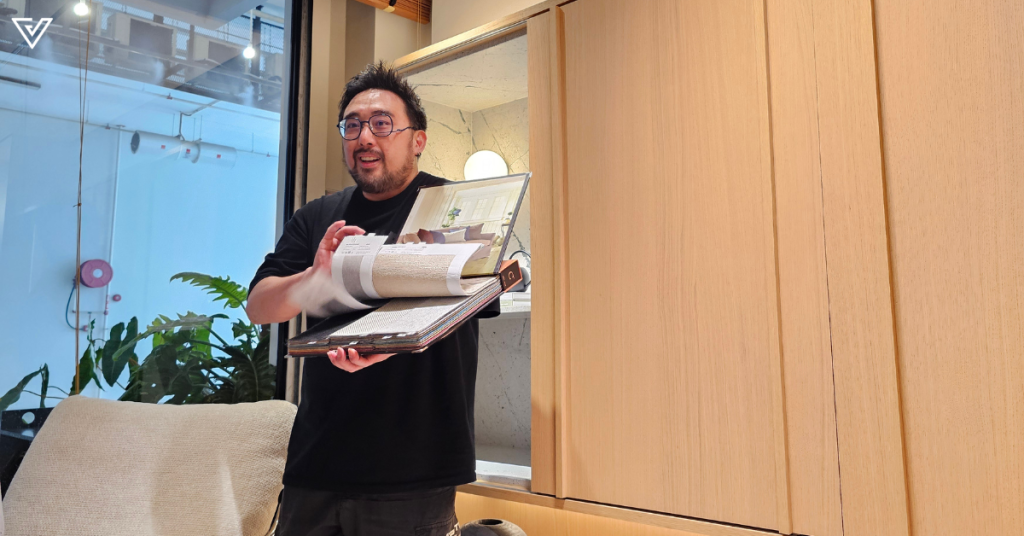
What sets apart a good designer from a great designer, Gavin believes, is being able to work with very limited resources.
Carrying that philosophy, the TMOG team is on track to achieving 1,200 makeovers this year—which is 100 a month.
In today’s day and age where owning a home feels harder than ever, especially for first-timers, it’s great to see how TMOG keeps affordability at the forefront of their approach.
- Learn more about The Makeover Guys here.
- Read other articles we’ve written about Malaysian startups here.
Also Read: SDEC 2024 will explore the latest trends in semicon, AI & ecommerce, here’s how to join
Featured Image Credit: Vulcan Post
Chick-fil-A to open 1st Asian branch in S’pore next year, now looking for local franchisees

Renowned for their chicken sandwiches, American fast food restaurant chain Chick-fil-A has announced plans to launch in Singapore.
The chain plans to invest US$75 million into its Asian expansion, and its eyes seem to be set on Singapore first. Chick-fil-A reportedly aims to open its first Singaporean restaurant in late 2025.
Anita Costello, Chick-fil-A’s chief international officer, said the firm chose Singapore as its first Asian location because of its strategic position and its residents’ enthusiasm for food.

“The profound love that Singaporeans have for food as well as the city’s strategic position as a gateway to the Asian market make it the ideal choice for Chick-fil-A’s first permanent restaurant in the region,” she said.
This expansion follows the three-day pop-up Chick-fil-A held the Esplanade in June this year. Serving its classic chicken sandwiches and waffle fries, the proceeds from their sold-out tickets were donated to the Community Chest charity fund.
Looking for franchisees
Ahead of its expansion into the city-state, Chick-fil-A added that it’s now looking for local franchisees, whom it refers to as Operators.
“Becoming a Chick-fil-A Franchisee offers the opportunity to build a business, shape a culture and invest in a better future,” the chain stated on a webpage titled Singapore Franchise Opportunity.
The page also states that the company is looking for franchise owner-operators fuelled by entrepreneurial spirits for building businesses and communities.
“We’re looking for those leaders, both the people who want to make a difference where they live and those who want to put down new roots, to introduce Chick-fil-A to the places we’ve never been before,” the announcement continued.
These franchisees are expected to be hands-on at their outlet. As such, they’re typically not allowed to open more than one branch to ensure their focus and commitment to their existing shop.

According to 8days’ article, Singapore franchisees will also “have the opportunity to be part of the Chick-fil-A Shared Table food donation programme”. This programme feeds hungry people by sharing surplus food with local nonprofit partners.
The article also shared that Chick-fil-A employs a unique franchise model that requires only a minimal franchise fee, as the company covers most startup expenses.
That said, franchisees are required to pay rent, a base operating fee, as well as adopt a profit-sharing model.
So no Sundays?
Founded in 1946, Chick-fil-A is the third largest quick-service restaurant company in the US, operating more than 3,000 restaurants across the States, Canada, and Puerto Rico.
Having spent some time in the US, I’ve been able to try their delicious chicken sandwiches (which we may call chicken burgers, a term that Americans do not accept) and waffle fries, and cannot wait to have the offering closer to home.
With that experience, I’m also astutely aware that come Sunday, the shutters are down, and no yummy chicken sandwiches can be found.
Thus, one question that I—and other netizens—seem to have is whether the chain will follow its usual custom of closing on Sundays.
While some netizens suggest that Singapore’s expensive rentals may force them to remain open on Sundays, it’s likely that Chick-fil-A will continue closing shop on Sundays.
“Six days a week, in neighbourhoods all across the globe, more than 3,000 Chick-fil-A restaurants are serving hand-breaded chicken sandwiches, hot waffle fries, and genuine hospitality,” the chain stated on its Singapore franchise opportunity page.
Also Read: M’sian chain ZUS Coffee finally lands in Singapore, opens first store in Changi Airport
Featured Image Credit: Chick-fil-A
Pedestrian crossings go touchless: S’pore to replace 11,500 push buttons by 2031 for hygiene
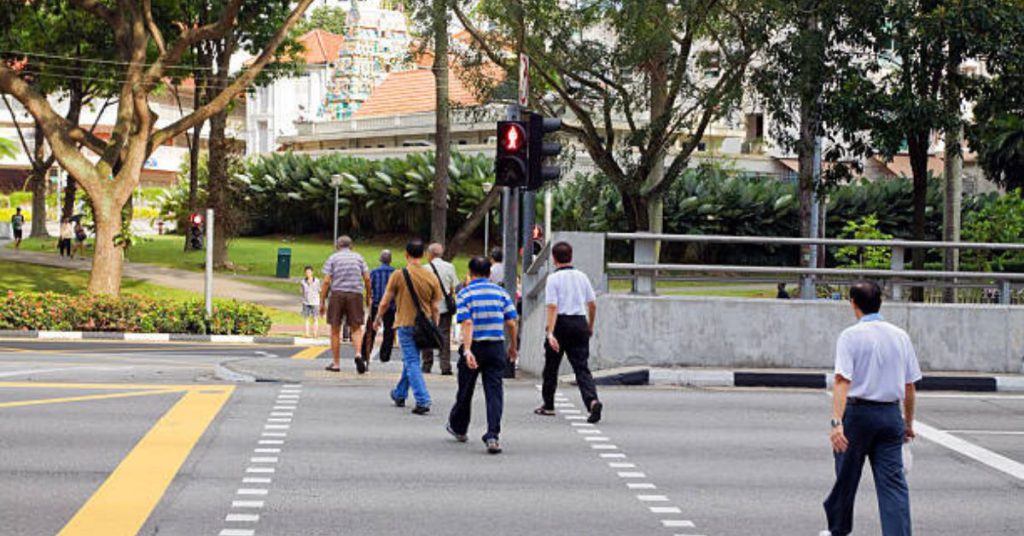
Starting in the fourth quarter of 2025, pedestrians in Singapore will experience a more modern way to cross the street—by waving their hands instead of pressing buttons.
The Land Transport Authority (LTA) has announced plans to replace all mechanical pedestrian push buttons with touchless sensors by 2031, reported The Straits Times.
This initiative aims to improve hygiene and reduce touchpoints at traffic junctions across the city, where 11,500 push buttons are currently in use.
Here’s a breakdown of how this shift will happen and what it means.
Wave, don’t push
In place of the classic mechanical buttons that have been a staple at traffic crossings, touchless sensors will soon be installed. These sensors detect hand movements, allowing pedestrians to simply wave in front of the device to signal their intent to cross.
This upgrade won’t just make crossing the road easier but also more hygienic by reducing the need for physical contact, something especially relevant in our post-pandemic world.
LTA estimates it will take six years to complete the replacement of push buttons at roughly 2,790 traffic junctions islandwide, with work kicking off in late 2025.
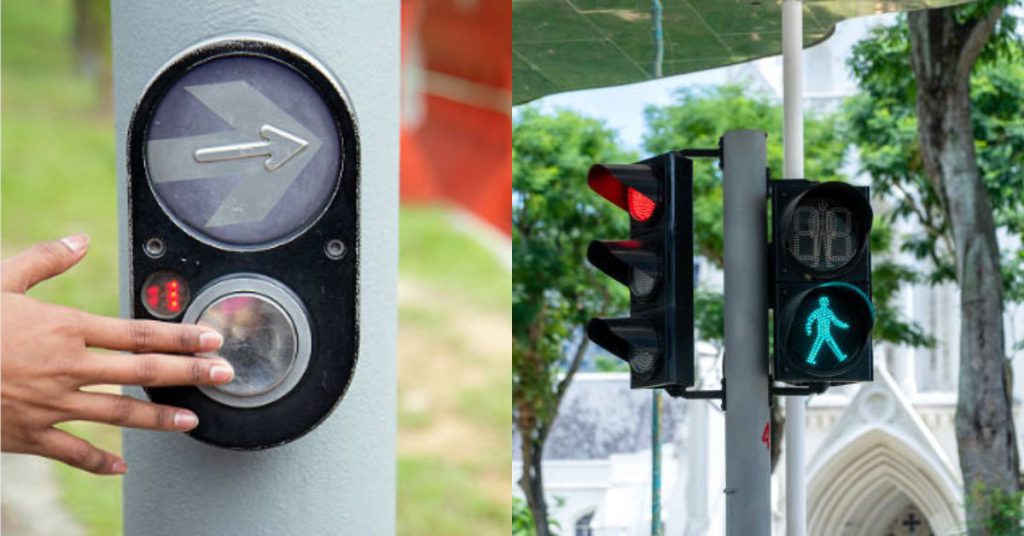
How do the sensors work?
LTA trialled two types of sensors in 2022 and 2023: infrared sensors and microwave sensors.
After evaluating both options, LTA chose the microwave sensors for their superior performance in detecting hand movements across different weather conditions. Here’s how it works:
- Microwave sensors emit electromagnetic waves and detect changes in their frequency when a hand moves in front of them.
- Infrared sensors rely on changes in light, but these were found to be less reliable in certain conditions, which is why LTA opted for microwave technology.
The system emits a sound when it detects a hand wave, letting pedestrians know it has registered their request.
Less wear and tear
Another key benefit of these new touchless sensors is the reduction in wear and tear, which has been an issue with mechanical push buttons.
Pedestrians often press these buttons multiple times, which causes them to wear out faster. The new sensors, with fewer moving parts, are expected to last longer and require less maintenance.
Currently, mechanical push buttons have a lifespan of 15 to 20 years, but as they age, they need more frequent repairs.
With touchless sensors, LTA expects lower maintenance costs and less manpower required for upkeep. This shift will also contribute to fewer breakdowns due to improper use.
Ensuring accessibility for everyone
One of the primary concerns raised during the trials was how the touchless sensors would accommodate visually impaired pedestrians.
To address this, LTA has worked closely with the Singapore Association of the Visually Handicapped to develop accessible features for the new system. The inclusion of Braille and sound cues will help guide those with visual impairments through the crossing process.
The installation of the new sensors will be part of a larger contract for the maintenance and installation of traffic light systems in Singapore.
LTA has already called for tenders, with the submission deadline set for November 25 this year. The selected contractor will be responsible for submitting a design that prevents public misuse and ensures the sensors work well in all weather conditions.
Despite the new technology, the sensors will look similar to the current push buttons and will feature the same arrow plate to indicate the crossing direction.
Singapore’s shift to touchless pedestrian crossings follows similar moves in countries like Australia, the United States, and Canada, where hygiene and accessibility improvements have driven the adoption of these systems.
Mixed reactions from the public
Not everyone is excited about the switch to touchless technology. Some have expressed their reluctance to give up the trusty push buttons.
One person quipped, “We need that to relieve stress, as pressing can help to vent our frustrations in waiting too long for the traffic light.”
Another added, “Please don’t take this power away from us. I like being able to push furiously for the system to understand that the red man has appeared for too long.”
Others, however, are welcoming the change, especially given how sensors have become more common in places like elevators and access doors.
“It’s a very good idea to have touchless sensors, but the button should remain there as a backup in case the sensor is faulty,” one individual suggested.
Also Read: Sidec aims to nurture 300 startups and SMEs to grow Malaysia’s GDP, here’s the game plan
Featured Image Credit: iStock
Singapore salary data: 200+ non-executive roles that pay S$10,000 per month or more
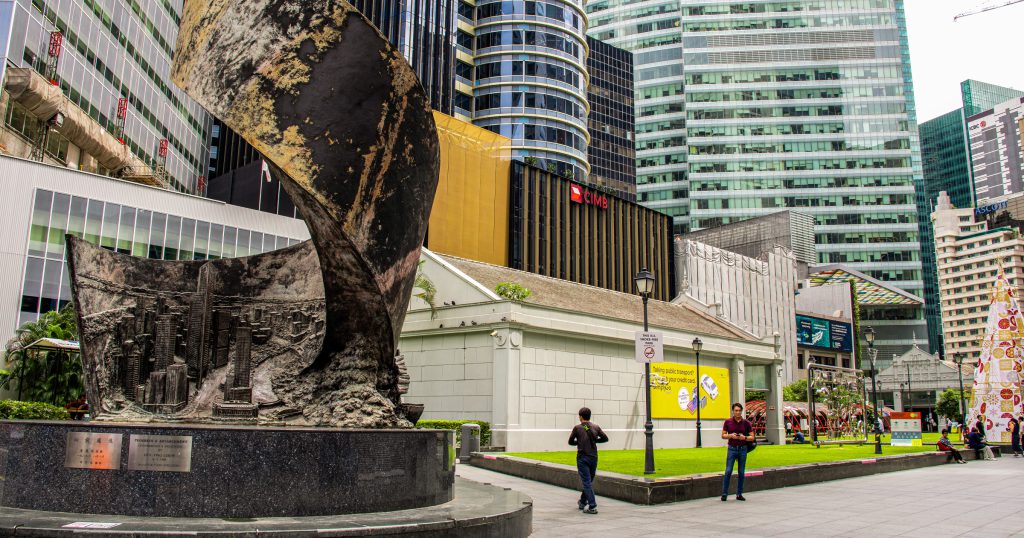
Disclaimer: Unless otherwise stated any opinions belong to the author.
British recruitment corporation, Michael Page, has released its annual salary guide for 2024, this time with even more detailed methodology comprising 280,000 data points from its own sources.
In total, the company has listed over 500 roles across 15 different professions, with their respective, average salaries—from the receptionist to the CEO—providing a comprehensive review of the employment situation in Singapore as of this year.
Disclaimer from Michael Page: “The data presented in this guide pertains to the full year of 2023 and specifically focuses on roles based in Singapore, incorporating salary projections for 2024. The limitations of this survey should be acknowledged. As we primarily utilise our own data, the reported salaries may be more reflective of our clientele than the broader market.”
Executive roles
We won’t be covering top executive roles in detail here, since they all fall in the same brackets across all industries, which start around S$200,000 per year for lower directorial and C-Level roles, up to around S$400,000 for CEOs and Presidents.
Besides that, if you’re in contention for the top positions in business, you’re probably not reading this right now anyway.
Our focus is on all the roles that most Singaporeans could aspire to which cross the attractive, round level of S$10,000 in monthly pay—or about 2x the national median.
For all other jobs, which fall below or considerably above (i.e. executive) this figure, you may head over to read the full Michael Page report, which is free to download.
So, how much can you make if you’re not a company head, director, or a C-Level officer? Let’s take a look below, starting with one of the larger category of jobs: finance, accounting and banking.
Accounting & Finance
| Role | Average Base Monthly Salary |
|---|---|
| Finance Manager | S$10,000 |
| Finance Transformation Manager | S$10,000 |
| Group Finance Manager | S$10,000 |
| Enterprise Risk Management / Risk and Compliance Manager | S$10,000 |
| Internal Audit Manager | S$10,000 |
| Internal Control Manager | S$10,000 |
| Corporate Finance Manager | S$10,000 |
| Financial Planning & Analysis (FP&A) Manager | S$10,000 |
| Transfer Pricing Manager | S$10,000 |
| Treasury Manager | S$10,833 |
| Finance Business Partner | S$10,833 |
| M&A Manager | S$10,833 |
| Tax Manager | S$10,833 |
| Plant Controller | S$12,500 |
| Project Controller | S$12,500 |
| Business Controller | S$13,750 |
| Financial Controller | S$15,000 |
Banking & Financial Services
| Role | Average Base Monthly Salary |
|---|---|
| Private Equity Analyst | S$10,000 |
| Back Office Manager | S$10,000 |
| Middle Office Administrator | S$10,667 |
| Claims Manager | S$10,750 |
| Underwriter | S$11,083 |
| Fund Administrator | S$11,250 |
| Banking Project Manager | S$11,667 |
| Investigations Manager | S$11,917 |
| Consolidations Lead | S$12,250 |
| Credit Analyst | S$12,500 |
| Equity Sales Associate | S$12,500 |
| Investment Banking Mergers & Acquisitions (M&A) Experienced Analyst |
S$12,500 |
| Anti Money Laundering (AML) Manager | S$12,500 |
| Middle Office Manager | S$12,500 |
| Wealth Planner | S$12,583 |
| Financial Advisor | S$13,000 |
| Buy-side, Investment Associate | S$13,333 |
| Operational Risk Manager | S$13,333 |
| Private Banking Client Advisor | S$15,833 |
| Fund Manager | S$16,667 |
| Actuary | S$17,417 |
| Investment Banking Mergers & Acquisitions (M&A) Experienced Associate |
S$18,333 |
Digital
| Role | Average Base Monthly Salary |
|---|---|
| Product Designer | S$10,000 |
| User Experience / User Interface (UX / UI) Designer | S$10,667 |
| Digital Marketing Manager | S$11,417 |
| Ecommerce Manager | S$11,417 |
| Product Manager | S$12,000 |
| Senior User Experience / User Interface (UX / UI) Designer | S$12,333 |
| Head of User Experience / User Interface (UX / UI) | S$12,500 |
| Search Engine Optimisation (SEO) Manager | S$12,667 |
| Head of Media Buying | S$13,167 |
| Customer Relationship Management (CRM) Manager | S$13,500 |
| Head of Search Engine Optimisation (SEO) | S$14,333 |
| Digital Project Manager | S$14,500 |
| Director of User Operations | S$15,000 |
| Senior Product Manager | S$15,000 |
Engineering & Manufacturing
| Role | Average Base Monthly Salary |
|---|---|
| Engineering Project Manager | S$10,000 |
| Maintenance Manager | S$10,000 |
| Senior HSE Manager | S$10,000 |
| Continuous Improvement Manager | S$10,000 |
| Workshop Manager | S$10,000 |
| Production Manager | S$10,000 |
| Innovation Manager | S$10,000 |
| Research & Development Manager | S$10,000 |
| Manufacturing Manager | S$10,833 |
| Quality Manager | S$11,667 |
| Plant Manager | S$15,000 |
| Energy Trader | S$20,833 |
Healthcare & Life Sciences
| Role | Average Base Monthly Salary |
|---|---|
| Manufacturing Manager | S$10,000 |
| Operations Manager | S$10,000 |
| Senior Scientist | S$10,000 |
| Senior Key Account Manager | S$11,000 |
| Product Manager | S$12,083 |
| Market Access Manager | S$12,417 |
| Senior Quality Manager | S$12,500 |
| Regulatory Affairs Manager | S$14,083 |
| Commercial Head | S$15,000 |
| Medical Affairs Manager | S$15,000 |
| Country Manager | S$20,833 |
| Plant Manager | S$20,833 |
Human Resources
| Role | Average Base Monthly Salary |
|---|---|
| Recruitment Specialist | S$10,000 |
| Reward & Benefits Analyst | S$12,000 |
| HR Business Partner | S$12,333 |
| Learning and Development Manager | S$12,500 |
| Recruitment Manager | S$12,500 |
| HR Consultant | S$12,583 |
| HR Manager | S$13,750 |
| Senior HR Manager | S$13,750 |
| Organisational Design Manager | S$15,000 |
| Reward & Benefits Manager | S$15,000 |
| Senior HR Business Partner | S$16,667 |
| Senior HR Consultant | S$16,667 |
Legal
| Role | Average Base Monthly Salary |
|---|---|
| Risk Analyst | S$10,000 |
| Compliance Manager | S$11,000 |
| Financial Crime Analyst | S$11,000 |
| Risk Manager | S$12,000 |
| Legal Counsel | S$13,333 |
| Lawyer | S$13,583 |
| Regulatory Lawyer | S$15,083 |
| Employment Lawyer | S$15,167 |
| Compliance Lawyer | S$15,833 |
| Senior Legal Counsel | S$16,500 |
| Banking Lawyer | S$16,667 |
| Senior Lawyer | S$16,667 |
| Intellectual Property Lawyer | S$17,833 |
Marketing
Somewhat surprisingly, perhaps, roles in marketing are some of the least well paid, with only three roles below the executive level crossing our S$10,000 level. Everybody else, sadly, falls below that.
| Role | Average Base Monthly Salary |
|---|---|
| Corporate Communications Manager | S$10,000 |
| Marketing Manager | S$10,000 |
| Communications Manager | S$10,833 |
Procurement & Supply Chain
| Role | Average Base Monthly Salary |
|---|---|
| Operations Manager | S$10,000 |
| Planning Manager | S$10,000 |
| Sales & Operations Planning (S&OP) Manager | S$10,000 |
| Commodity / Sourcing Manager | S$10,000 |
| Costing Manager | S$10,000 |
| Procurement Manager | S$10,000 |
| Supply Chain E-commerce Manager | S$10,000 |
| Compliance Manager | S$10,000 |
| Import / Export Manager | S$10,000 |
| Logistics Manager | S$10,000 |
| Planning Analyst | S$10,833 |
| Supply Chain Program Manager | S$11,667 |
| Head of Logistics | S$12,500 |
| Logistics Project Manager | S$13,083 |
| Supplier Relationship Management | S$15,000 |
| Senior Compliance Manager | S$15,000 |
Property & Construction
| Role | Average Base Monthly Salary |
|---|---|
| Contracts Manager | S$10,000 |
| Development Manager | S$10,000 |
| Property Manager | S$10,000 |
| Technical Manager | S$10,000 |
| Architect | S$10,000 |
| Building Information Modelling (BIM) Manager | S$10,000 |
| Design Manager | S$10,000 |
| Interior Designer | S$10,000 |
| Project Manager | S$10,000 |
| Senior Site Manager | S$10,000 |
| Data Centre Facility Manager | S$12,000 |
| Facilities Manager | S$12,000 |
| Senior Project Manager | S$12,000 |
Sales
| Role | Average Base Monthly Salary |
|---|---|
| Business Development Manager | S$10,000 |
| Customer Success Manager | S$10,000 |
| Senior Key Account Manager | S$10,000 |
| Sales Project Manager | S$11,417 |
| Commercial Manager | S$12,000 |
| Sales Manager | S$13,250 |
| Senior Business Development Manager | S$15,000 |
Secretarial & Business Support
It’s no secret that secretarial roles are not exactly the best paid and it finds confirmation here, with only one role qualifying under our criteria, and even it is here only because its area of focus is law.
| Role | Average Base Monthly Salary |
|---|---|
| Legal Services Administrator | S$15,000 |
Sustainability & ESG
Sustainability roles, however well regarded by modern corporations, do not exactly provide many opportunities to climb the ladder financially.
| Role | Average Base Monthly Salary |
|---|---|
| ESG / Sustainability Manager | S$10,000 |
| ESG Consulting Manager | S$15,833 |
Technology
Finally, and unsurprisingly, the biggest standalone category of all: technology, where qualified talent can still find good pay.
Singapore, being the small and surprisingly restrictive labour market, is probably faring better than most other countries where waves of layoffs have released thousands of people looking for new employment at the same time, leading to a demonstrable glut and shortage of offers.
| Role | Average Base Monthly Salary |
|---|---|
| IT Auditor | S$10,000 |
| IT Security Consultant | S$10,000 |
| Salesforce Consultant | S$10,000 |
| Power BI Developer | S$10,250 |
| Technical Writer | S$10,250 |
| Front-end Developer | S$10,500 |
| Web Developer | S$10,500 |
| Technical Business Analyst | S$10,583 |
| Software Developer | S$10,833 |
| Software Engineer | S$10,833 |
| SAP Consultant | S$10,833 |
| Data Analyst | S$10,917 |
| .NET Developer | S$11,083 |
| IT Support Analyst | S$11,167 |
| Full-stack Developer | S$11,250 |
| Python Developer | S$11,417 |
| Android Developer | S$11,583 |
| Robotic Process Automation (RPA) Developer | S$11,750 |
| Master Data Manager | S$11,833 |
| IT Audit Manager | S$11,917 |
| Application Support Analyst | S$11,917 |
| Programmer | S$12,083 |
| Data Engineer | S$12,250 |
| Business Intelligence (BI) Analyst | S$12,417 |
| Data Governance Engineer | S$12,500 |
| Java Developer | S$12,500 |
| IT Manager | S$12,500 |
| Business Intelligence (BI) Developer | S$12,583 |
| DevOps Engineer | S$12,583 |
| Implementation Manager | S$12,583 |
| Network Engineer | S$12,583 |
| Scrum Master | S$12,750 |
| Hardware Engineer | S$12,833 |
| IT Project Manager | S$12,833 |
| Test Lead | S$12,917 |
| Database Administrator | S$13,000 |
| Senior Software Developer | S$13,083 |
| IT Security Manager | S$13,167 |
| Business Analyst | S$13,167 |
| Service Delivery Manager | S$13,667 |
| IT Consultant | S$13,833 |
| Senior .Net Developer | S$13,833 |
| Infrastructure Engineer | S$13,833 |
| Back-end Developer | S$13,917 |
| C++ Developer | S$14,167 |
| Data Science Consultant | S$14,333 |
| Business Analytics Manager | S$14,417 |
| Solution Architect | S$14,667 |
| Data Scientist | S$15,000 |
| Senior Java Developer | S$15,000 |
| Enterprise Architect | S$15,333 |
| Infrastructure Architect | S$16,333 |
| Game Developer | S$16,417 |
| Data Science Manager | S$16,500 |
| Data Architect | S$17,500 |
While the above figures are more specific to Michael Page rather than the entire market, they provide a good benchmark for those in the corporate world and are a useful reference for other companies (bearing in mind that pay in smaller businesses may be a bit worse).
Nevertheless, given the breadth of a total of 500+ different roles and 280,000 data points that the company cites, it should be more accurate than a typical survey, giving you a general idea of whether you fall below or above average—and what you can hope for going forward.
Good luck!
Also Read: MOM: Higher-income workers in S’pore get twice as many days of paid leave as the bottom ones
Featured Image Credit: Shutterstock



